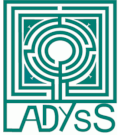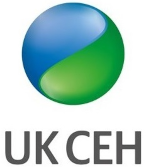Home > News > GDRI EHEDE @ the Zone atelier/LTSER Hwange…

GDRI EHEDE @ the Zone atelier/LTSER Hwange…
October 22, 2017
The Zone atelier/LTESR Hwange (ZAH), is devoted to long-term multi-disciplinary research about the dynamics of a savanna ecosystem, the Hwange National Park and its periphery (≈15000 km²), at the western border of Zimbabwe. In collaboration with Hervé Fritz, the director of the ZAH, the GDRI EHEDE scheduled workshops and meetings there, at the CNRS/CIRAD research station, from October 16 to 21.

The objectives were:
- to make Chinese scientists (Pr. Li Li and colleagues of the WMEH lab, YUFE, Kunming) and wild Asian elephant reserve managers (XiShuangBanNa Nature Reserve officers) meet with scientists and stakeholders dealing with African elephant conservation and elephants – humans conflicts in Hwange.
- to evaluate the feasibility of surveying Echinococcus sp. in domestic animals and wildlife in Zimbabwe in connection with other African countries and a next application of the CESSARI group that Thomas Romig, University Hohenheim, coordinates from Germany.
Unfortunately, last minute complications prevented the Chinese delegation to obtain a visa, and Hervé Fritz, director of the Zone atelier, could not obtain clearance from the CNRS defense officer for attending the meeting on time. Patrick Giraudoux was alone able to travel to the Zone atelier Hwange. There, using a contact list, advised by Hervé Fritz and Brian and Marleen Sabeta (Sable Sands lodge), he could meet people and prospect collaboration opportunities, kindly assisted for logistics by M. Mpala Zakhele, manager of the research station.

Briefly:
- Zimbabwe authorities and persons in charge of wildlife conservation in Zimbabwe have a strong concern about elephant poaching, part of it being organized illegally by Chinese and local mafias (also illegal in China, see the newspapers frequently reporting about the situation on ivory traffics, e.g. https://www.dailynews.co.zw/articles/2017/06/13/china-moves-to-end-illegal-wildlife-trade). In this context, the opportunity and benefits of meeting with Chinese scientists and managers involved in elephant conservation and wildlife – human conflict in China and of better knowing each other and methodological approaches are obvious. The conditions permitting to optimize such a meeting under the umbrella of the GDRI EHEDE and the Zone atelier Hwange have been discussed with Mathieu Bourgarel, Cirad Representative/DREAM Project Manager based in Harare, and with conservation projects managers in Zimbabwe. A possible scheme for further meetings has been designed on this basis.
-
 Regarding Echinococcus transmission, Zimbabwe has been confirmed to be a “white map”. Dr Hillary Madzikanda, has confirmed that the “Painted Dog Conservation” is interested in studying wild carnivore parasites, especially based on stool analysis, in collaboration with Thomas Romig’s group (which includes a number of members of the GDRI EHEDE). Direct contact can now be taken. Patrick Giraudoux also met Brent Stapelkamp and Laurie Simpson, Soft Foot Alliance, who gave an overview about the situation of the “big cats” and their interactions with communities and herdsmen (potentially an important issue in Echinococcus studies and domestic – wildlife interactions).
Regarding Echinococcus transmission, Zimbabwe has been confirmed to be a “white map”. Dr Hillary Madzikanda, has confirmed that the “Painted Dog Conservation” is interested in studying wild carnivore parasites, especially based on stool analysis, in collaboration with Thomas Romig’s group (which includes a number of members of the GDRI EHEDE). Direct contact can now be taken. Patrick Giraudoux also met Brent Stapelkamp and Laurie Simpson, Soft Foot Alliance, who gave an overview about the situation of the “big cats” and their interactions with communities and herdsmen (potentially an important issue in Echinococcus studies and domestic – wildlife interactions). - Several talks on Echinococcus ecology and student training in GIS were additionally given at the Hwange research station and at the “Painted Dog Conservation” headquarters.
More to come in the next few weeks/months, hopefully…

Contact:
Patrick Giraudoux
- Chrono-environment - University of Franche-Comté
- Wildlife management and ecosystem health lab, Yunnan University of Finance and Economics.
See also:









